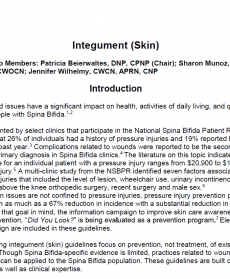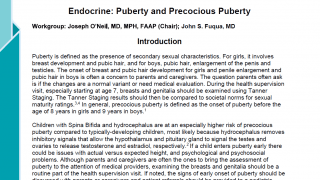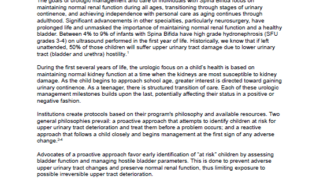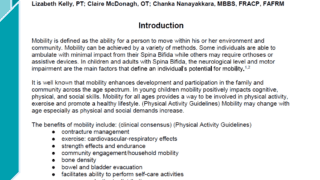Workgroup Members: Patricia Beierwaltes, DNP, CPNP (Chair), Sharon Munoz, RN, MS, BC-CNS, CWOCN, Jennifer Wilhelmy, CWCN, APRN, CNP
Introduction
Skin-related issues have a significant impact on health, activities of daily living, and quality of life among people with Spina Bifida.1,2
Data presented by select clinics that participate in the National Spina Bifida Patient Registry reported that 26% of individuals had a history of pressure injuries and 19% reported having had one in the past year.3 Complications related to wounds were reported to be the second most common primary diagnosis in Spina Bifida clinics.4 The literature on this topic indicates that the cost to care for an individual patient with a pressure injury ranges from $20,900 to $151,700 per pressure injury.5 A multi-clinic study from the NSBPR identified seven factors associated with pressure injuries that included the level of lesion, wheelchair use, urinary incontinence, shunt presence, above the knee orthopedic surgery, recent surgery and male sex.6
Though skin issues are not confined to pressure injuries, pressure injury prevention programs have shown as much as a 67% reduction in incidence with a substantial reduction in the cost of care.1 With that goal in mind, the information campaign to improve skin care awareness and wound prevention, “Did You Look?” is being evaluated as a prevention program.7 Elements from this campaign are included in these guidelines.
The following integument (skin) guidelines focus on prevention, not treatment, of existing problems. Though Spina Bifida-specific evidence is limited, practices related to wound prevention can be applied to the Spina Bifida population. These guidelines are built on that evidence as well as clinical expertise.
Outcomes
Primary
- Maximize healthy skin. Minimize disruptions in skin integrity.
Secondary
- Increase awareness of skin issues, risks, self-assessment, and prevention measures.
Tertiary
- Improve health outcomes with minimal skin integrity issues across the lifespan.
0-11 months
Clinical Questions
- What is the evidence for the pathogenesis of skin breakdown (pressure injury) in infants with Spina Bifida?
- Is there evidence that insensate skin in infants with Spina Bifida can be the protected from breakdown?
Guidelines
- Discuss insensate skin with parents/caregivers.8
- Discuss the risk factors that may contribute to impaired skin integrity.5-6,9-14
- Teach to inspect the skin for changes in color, texture, and temperature.5-6,9-14
- Discuss the need to check water temperature and encourage the use of a bath water thermometer.6,9-14
- Tell parents and caregivers to check for hot surfaces that have been exposed to the sun such as car seats and playground equipment. 6,9-14
- Recommend the use of barrier creams to protect the skin from damage as a result of bowel and bladder incontinence.8,12
1-2 years 11 months
Clinical Questions
- What is the evidence that early intervention and education will reduce skin injury?
Guidelines
- Teach parents and caregivers to inspect the skin (especially weight bearing or insensate areas) for changes in color, texture, and temperature.6,9-14
- Recommend the use of barrier creams to protect the skin from damage as a result of bowel and bladder incontinence.8,12
- Discuss the need to check water temperature and encourage the use of a bath water thermometer.6,9-14
- Tell parents and caregivers to check for hot surfaces that have been exposed to the sun such as car seats and playground equipment.6,9-14
- Teach parents/caregivers how to inspect for well-fitting orthoses.15
- Teach parents and caregivers that the child should wear protective clothing and footwear over insensate areas.12
3-5 years 11 months
Clinical Questions
- What activities promote self-awareness and self-inspection in children with Spina Bifida?
Guidelines
- Teach parents and caregivers to inspect the skin daily (especially weight bearing or insensate areas) for changes in color, texture, and temperature.6,9-14
- Encourage the child’s involvement in skin inspection.12
- Teach child to develop awareness of insensate areas.6,9-14
- Review with parents and caregivers the consequences of heat, moisture, or pressure related to insensate areas.6,9-14,20
- Recommend the use of barrier creams to protect the skin from damage as a result of bowel and bladder incontinence.8,12
- Discuss the need to check water temperature and encourage the use of a bath water thermometer.6,9-14
- Tell parents and caregivers to check for hot surfaces that have been exposed to the sun such as car seats and playground equipment.6,9-14
- Teach parents/caregivers how to inspect for well-fitting orthoses.15
- Teach parents and caregivers that the child should wear protective clothing and footwear (including water shoes in a pool or on pool deck) over insensate areas.12
- Tell parents and caregivers to seek treatment if the child’s skin is compromised.12
- Tell parents and caregivers to seek treatment if the child’s skin is compromised.12
6-12 years 11 months
Clinical Questions
- What evidence is there that coaching independence will reduce skin breakdown?
Guidelines
- Teach parents and caregivers to inspect the skin daily (especially weight bearing or insensate areas) for changes in color, texture, and temperature.6,9-14
- Encourage the child’s involvement in skin inspection.12
- Teach child to develop awareness of insensate areas.6,9-14
- Review with parents and caregivers the consequences of heat, moisture, or pressure related to insensate areas.6,9-1,20
- Teach parents/caregivers how to inspect for well-fitting orthoses and other equipment that may cause injury to skin.15
- Teach parents and caregivers that the child should wear protective clothing and footwear over insensate areas.12
- Discuss the need to check water temperature and encourage the use of a bath water thermometer.6,9-14
- Tell parents and caregivers to check for hot surfaces that have been exposed to the sun such as car seats and playground equipment.6,9-14
- Promote adequate hydration and proper nutrition for healthy skin.3,12,17 (Nutrition and Obesity Guidelines)19
- Encourage parents, caregivers, and the child to keep skin clean and dry.6,9-14
- Suggest wearing seamless socks that are clean and dry.12
- Suggest the use of antiperspirant on areas with perspiration, such as the feet and intertriginous areas.12-13
- Tell parents and caregivers to seek treatment if the child’s skin is compromised.12
- Advise parents and caregivers to engage non-ambulatory children in pressure-relieving activities every 15 minutes.1,5,13
13-17 years 11 months, 18+ years
Clinical Questions
- What are the key factors associated with skin breakdown?
- Does the incidence of skin breakdown relate to the level of Spina Bifida?
- What evidence is there that specific prevention measures will reduce the chance of skin breakdown?
Guidelines
- Inspect skin daily. Explore the teen perceptions of self-efficacy for skin checks and barriers to skin checks. Develop plans to increase self-efficacy, if needed.6,9-14
- Suggest children and adults who use wheelchairs to use a pressure-relieving cushion and check it daily.1,13-14
- Identify and discuss risk factors that specifically increase the risk of pressure injuries in children and adults with Spina Bifida, such as using a wheelchair, having had surgery above the knee, shunts, a higher level of lesion, recent surgery, bladder incontinence, and being of the male gender.11,15-16,18
- Review with the caregiver, child, or adult the consequences of heat, moisture, or pressure related to insensate areas.6,9-14,2
- Teach parents/caregivers/child/adult how to inspect for well-fitting orthoses.15
- Discuss the need to check water temperature and encourage the use of a bath water thermometer.6,9-14
- Tell children/adults to check for hot surfaces that have been exposed to the sun such as car seats.6,9-14
- Promote adequate hydration and proper nutrition for healthy skin.12,17 (Nutrition and Obesity Guidelines)19
- Encourage parents, caregivers, children, and adults to keep skin clean and dry.6,9-14
- Suggest wearing seamless socks that are clean and dry.12
- Suggest the use of antiperspirant on areas with perspiration, such as the feet and intertriginous areas.12-13
- Encourage seeking treatment if the skin is compromised.12
- Advise children and adults who are non-ambulatory and use a wheelchair to engage in pressure-relieving activities every 15 minutes.1,13-14
- Teach safe transfer skills to non-ambulatory patients.12,15-16
- Seek treatment immediately for any pressure injury. Refer to wound clinic for any pressure injury at stage three or greater.12
Research Gaps
- Does consistent implementation of a defined bundle of prevention strategies reduce the incidence of skin breakdown in individuals with Spina Bifida?
- What evidence is there that coaching independence will reduce skin breakdown?
- What is the evidence for the pathogenesis of skin breakdown (pressure injury) in infants with Spina Bifida?
- Is there evidence that insensate skin in infants with Spina Bifida can be protected from breakdown?
References
- Otttolini, K., et al. (2013). Wound care challenges in children and adults with Spina Bifida: An open-cohort study. Journal of Pediatric Rehabilitation Medicine, 6, 1-10.
- Clark, Michael. (2002).”Pressure ulcers and quality of life.” Nursing Standard (through 2013) 16.22 74-80.
- Bryant, R.A., & Nix, D.P. (2016). Acute and chronic wounds: Current management concepts (5th ed.). St. Louis: Elsevier.
- Curley, M. A., Razmus, I. S., Roberts, K. E., & Wypij, D. (2003). Predicting pressure ulcer risk in pediatric patients: the Braden Q scale. Nursing Research, 52, 22-33.
- Mahmood, D., Dicianno, B., & Bellin, M. (2011). Self‐management, preventable conditions and assessment of care among young adults with myelomeningocele. Child: Care, health and development, 37(6), 861-865.
- Kim, S., Ward, E. Dicianno, B., Clayton, G., Sawin, K., Beierwaltes, P., Thibadeau, J. (2015). Archives of Physical Medicine & Rehabilitation, 96, 1435-1441. DOI: 10.1016/j.apmr.2015.02.029.
- Did you look? Skin integrity bundle. Retrieved 7/28/2017 from https://spinabifidaassociation.org/wp-content/uploads/2017/03/Did-You-Look-Training-Presentation-Final.pdf
- Baharestani, M. M. & Ratliff, C.R. (2007). Pressure ulcers in neonates and children: An NPUAP White Paper. Advances in Skin and Wound Care, 20, 208-218.
- Black, J. M., Edsberg, L. E., Baharestani, M. M., Langemo, D., Goldberg, M., McNichol, L.,…The National Pressure Ulcer Advisory Panel (2011). Pressure Ulcers: Avoidable or Unavoidable? Results of the National Pressure Ulcer Advisory Panel Consensus Conference. Ostomy and Wound Management, 57, 24-37.
- Bryant, R.A., & Nix, D.P. (2016). Acute and chronic wounds: Current management concepts (5th ed.). St. Louis: Elsevier.
- Brustrom, Jennifer, Thibadeau, Judy, John, Lisa, Liesmann, Jaime, & Rose, Shyanika. (2012). Care Coordination in the Spina Bifida Clinic Setting: Current Practice and Future Directions. Journal of Pediatric Health Care, 26(1), 16-26.doi: https://dx.doi.org/10.1016/j.pedhc.2010.06.003
- DeJong, G., Hsieh, C. H. J., Brown, P., Smout, R. J., Horn, S. D., Ballard, P., & Bouchard, T. (2014). Factors associated with pressure ulcer risk in spinal cord injury rehabilitation. American Journal of Physical Medicine & Rehabilitation, 93(11), 971-986.
- Lala, D., Dumont, F. S., Leblond, J., Houghton, P. E., & Noreau, L. (2014). Impact of Pressure Ulcers on Individuals Living with a Spinal Cord Injury. Archives of physical medicine and rehabilitation, 95(12), 2312-2319.
- Prevention and Treatment of Pressure Ulcers: Quick reference guide. (2014). Retrieved from https://www.npuap.org/wp-content/uploads/2014/08/Updated-10-16-14-Quick-Reference-Guide-DIGITAL-NPUAP-EPUAP-PPPIA-16Oct2014.pdf
- Doughty, D.B. & McNichol, L.L. (2016). WOCNS Core Curriculum; Wound Management. Philadelphia: Wolters-Kluwer.
- Did you look? Skin integrity bundle. Retrieved 7/28/2017 from https://spinabifidaassociation.org/wp-content/uploads/2017/03/Did-You-Look-Training-Presentation-Final.pdf
- Dicianno, B. & Wilson, R. (2010). Hospitalizations of adults with Spina Bifida and congenital spinal cord anomalies. Archives of Physical Medicine & Rehabilitation, 91, 529-535.
- Dorner, B., Posthauer, M. E., Thomas, D., & National Pressure Ulcer Advisory Panel. (2009). The role of nutrition in pressure ulcer prevention and treatment: National Pressure Ulcer Advisory Panel White Paper. Retrieved October 15, 2014, from https://https://www.npuap.org/resources/white-papers/
- Elsner, J.J., Gefen, A. (2008). Is obesity a risk factor for deep tissue injury in patients with spinal cord injury? Journal of Biomechanics, 41, 3322-3331.
- Institute for Healthcare Improvement. (2011). How to guide: Prevent pressure ulcers. Retrieved June 16, 2014, from https://www.ihi.org/resources/Pages/Tools/HowtoGuidePreventPressureUlcers.aspx
Tags



